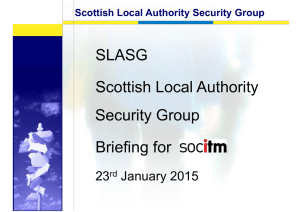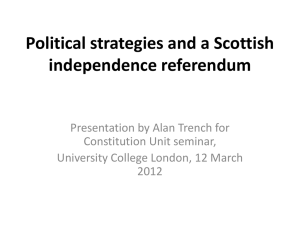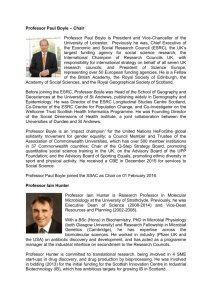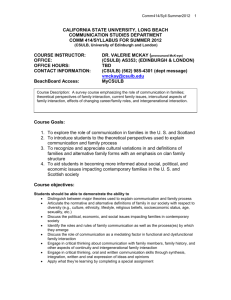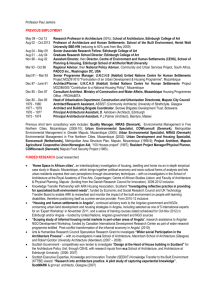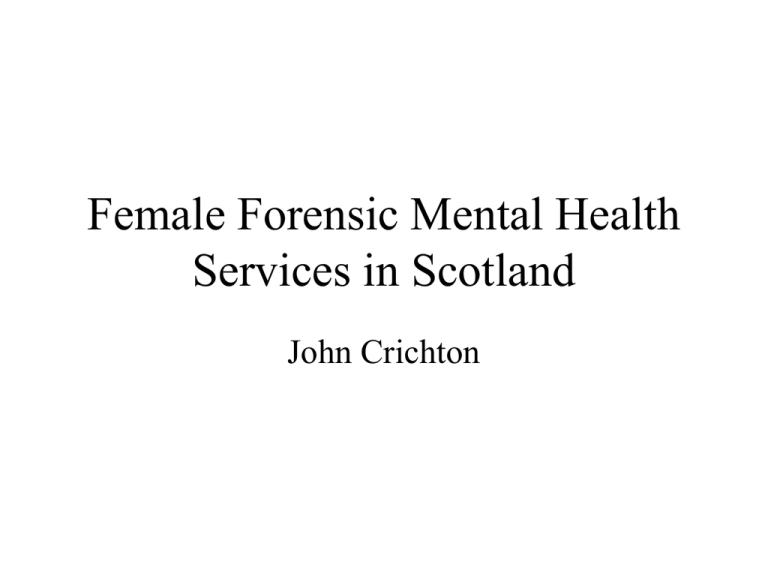
Female Forensic Mental Health
Services in Scotland
John Crichton
Policy Context
•
•
•
•
•
•
•
•
•
•
•
•
•
Scottish Office (1998) Women offenders: A safer way: A review of community
disposals and the use of custody for women offenders in Scotland. Edinburgh: Social
Work Services Inspectorate
Scottish Executive (2002) A better way. Report of the ministerial group on women’s
offending Edinburgh: Scottish Executive
Scottish Executive (2006) Reducing Reoffending: National Strategy for the Management
of Offenders Edinburgh: Scottish Executive
Scottish Government (2008) Equally Well: report of the ministerial task force on health
inequalities Edinburgh: Scottish Government
Scottish Government (2009a) Equal Opportunities Committee Report; SP Paper 332
Edinburgh: Scottish Government
Scottish Government (2009b) Safer Lives: Changed Lives A Shared Approach to
Tackling Violence Against Women In Scotland Edinburgh: Scottish Government
Scottish Prison Service (2010) SPS Strategy Framework for the Management of Women
Offenders in Custody Edinburgh: Scottish Prison Service
Commission on Women Offenders: Final Report April 2012
Claire Lamza’s MSc
• 1. Difficulty in finding in-patient places for female forensic
patients.
• 2. Particular difficulty of finding secure beds for anyone
not suitable for conditions of special security.
• 3. The need to manage deliberate self-harm and the
sequelae of childhood sexual abuse.
• 4. The lack of resources to meet these treatment needs.
• 5. The difficulties of managing men and women in the
same environment: the women’s needs are not met and
they are seen as disruptive of the overall service.
• 6. The importance of and the lack of suitable supported
community placements.
FORENSIC MENTAL HEALTH SERVICES
MANAGED CARE NETWORK
REPORT OF THE SERVICES FOR WOMEN
WORKING GROUP 2004
• Dedicated multidisciplinary teams responsible for
providing Forensic Psychiatry Services for Women
should be established within local Forensic Services
across Scotland. As a minimum there should be at least
one such service within each of the 4 regional
groupings. These should provide, direct secure and
open inpatient care as well as community care. They
should also be a source of support and expert advice to
other local services. All of Scotland should be covered
by such a service.
High secure care
• Until Secure Services for Women are available
Scotland-wide, the Women’s Service at the
State Hospital should continue as a high quality
service. It should not, in the meantime be run
down. Where service improvements are
required (for instance development of the
rehabilitation service and standard of
accommodation) these should be made. Only
once there is clearly no need for the service,
should it be closed.
Developments
•
•
•
•
•
closure of high secure female services.
Referral pathway now in place to Rampton
Two Medium secure sites
LD services Rowanbank
Low secure patchy with use of private
sector
Challenges
• Remand high secure patients
• Length of high secure referrals
• Differences in models of care – seclusion
SUS
• Adapting Orchard Clinic to single sex and
pd
• Follow on care
Further reading
•
•
•
•
A Model and Framework for Working
with Women Offenders
A multi-faceted partnership approach
Kirsty Pate, Women Offender Planning and
Development Manager, Lothian and
• Borders Community Justice Authority
• © Lothian & Borders Community Justice
Authority June 2010







